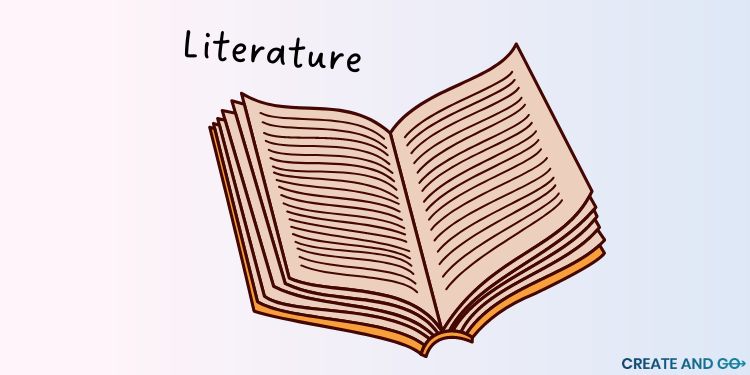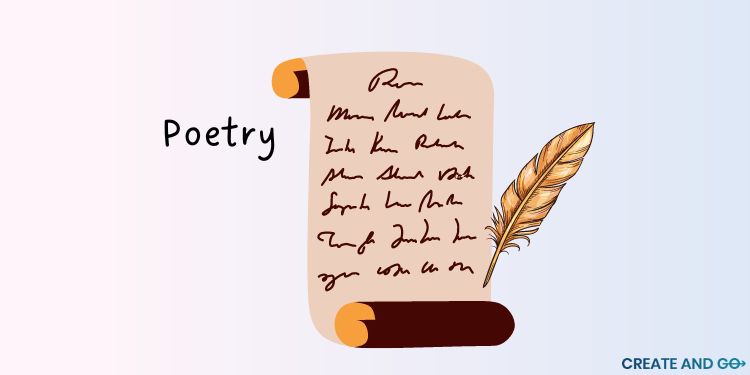Anaphora is a powerful literary device that is often used to emphasize the importance of an emotion or idea. Anaphora examples can be found throughout history in literature, poetry, and song lyrics.
But what exactly is anaphora and how is it used?
In this article, we will explore how anaphora works, including:
- The definition of anaphora
- How to use anaphora
- Various anaphora examples
- Tips on how to use anaphora
With these anaphora examples, you will have the knowledge and tools to master this powerful writing technique.
What is Anaphora?

Anaphora is a literary device where the same word or phrase is repeated in successive sentences to emphasize a point.
You’ll hear anaphora examples in everything from literature to poetry to songs and even daily conversations.
It’s like putting an extra layer of emphasis on something you want your listener to remember!
For example, someone might say “I’m telling you this once and I’m telling you this twice, don’t forget it!”
Repeating the same word(s) in sentences is a great way to make sure your message is being heard.
Anaphora can also be used in a comedic context, as when someone might exclaim “Oh no! Not again! Again and again and again!” to get the joke across that something unpleasant keeps happening over and over.
When to Use Anaphora
Now that you understand the anaphora definition, let’s talk about some various use cases for this common literary device:
- Express emotion: Anaphora is great for expressing intense emotion, where it’s a deep sense of foreboding, longing, or other emotions.
- Draw attention to an idea: Repetition of key words and phrases helps the reader focus on a specific point or theme.
- Create rhythm and flow: Employing anaphora can help make your writing more fluid and melodic by adding structure to sentences.
- Emphasize meaning: By repeating certain words, you can create emphasis or dramatic effect on an idea or statement that you would like your reader to take away.
Examples of Anaphora
Let’s explore a few examples of how to use this rhetorical device in various written and verbal works.
Anaphora in Literature

Anaphora can be used in a narrative to create tension, suspense, humor, and many other emotions.
1. Shakespeare’s Macbeth
“Fair is foul and foul is fair— Hover through the fog and filthy air.”
These successive phrases are repeated throughout the play, helping to build up the atmosphere of the story.
2. Charles Dickens’ A Tale of Two Cities
“It was the best of times, it was the worst of times…”
This famous line is repeated multiple times throughout the novel, serving as an overarching theme that expresses the turmoil and unrest in London and Paris at the time.
3. The Bible
“Blessed be the Lord God Almighty! Blessed be His glorious name forever and ever!”
The use of anaphora in this passage from the book of Revelation emphasizes the power of God’s name.
4. F. Scott Fitzgerald’s Great Gatsby
“The apartment was on the top floor—a small living-room, a small dining-room, a small bedroom, and a bath.”
The repetition of the word “small” in this passage conveys the idea that Gatsby’s apartment is not quite as grand as he would like it to be.
5. J.D. Salinger’s The Catcher in the Rye
“It rained on his lousy tombstone, and it rained on the grass on his stomach. It rained all over the place.”
This passage serves to emphasize Holden’s grief over the death of his brother, as the phrase “it rained” is repeated multiple times.
Anaphora in Poetry

Anaphora is a popular poetic device used to create rhythm and cadence.
1. T.S. Eliot’s The Waste Land
“I will show you fear in a handful of dust, Fear and ashes, Fear for the last few days, Fear for the long months to come.”
In this anaphora example, the word “fear” is repeated throughout the poem to emphasize a sense of desolation.
2. “Dreams” by Langston Hughes
“Hold fast to dreams
For if dreams die
Life is a broken-winged bird
That cannot fly.
Hold fast to dreams
For when dreams go
Life is a barren field
Frozen with snow.”
This poem uses anaphora to emphasize the importance of dreams in order to keep hope alive.
3. “Still I Rise” by Maya Angelou
“You may shoot me with your words,
You may cut me with your eyes,
You may kill me with your hatefulness,
But still, like air, I’ll rise.”
The phrase “you may” is repeated three times in this poem to illustrate the speaker’s resilience despite any obstacles that may be
4. “Fire and Ice” by Robert Frost
“Some say the world will end in fire,
Some say in ice.
From what I’ve tasted of desire,
I hold with those who favor fire.”
In this example, the words “some say” are repeated three times to create a sense of suspense as the speaker offers two different theories on the fate of the world.
5. “A Poison Tree” by William Blake
“I was angry with my friend:
I told my wrath, my wrath did end.
I was angry with my foe:
I told it not, my wrath did grow.”
This poem uses anaphora to emphasize the power of expressing one’s emotions versus suppressing them.
Anaphora in Politics

You’ll often see anaphora examples in political or motivational writing because it’s very important for speakers to emphasize points and reinforce meaning when public speaking.
Here are some famous examples of anaphora used in political speeches to emphasize the speaker’s point and rally the audience.
1. Barack Obama’s “Yes We Can”
“We are not as divided as our politics suggest, we’re not as cynical as the pundits believe, we are greater than the sum of our individual ambitions, and we remain more than a collection of red states and blue states. We are, and forever will be, the United States of America.”
Obama’s repetition of the word “we” in this speech emphasizes the idea of unity and togetherness.
2. Martin Luther King Jr.’s “I Have a Dream”
“Never before have I seen the moral courage that I see in you men and women here today who still suffer under the burden of discrimination. Never before have I seen the mass effort of a people determined to rid itself of an oppressive yoke…”
In this passage, Martin Luther King repeated words of “never before” emphasize how hard it is for oppressed people to fight for their freedom.
3. John F. Kennedy’s Inauguration Speech
“Let every nation know, whether it wishes us well or ill, that we shall pay any price, bear any burden, meet any hardship, support any friend, oppose any foe to assure the survival and the success of liberty.”
Kennedy uses the word “any” in successive sentences to emphasize the lengths that his administration will go to protect freedom.
4. Ronald Reagan’s “Berlin Wall”
“As I looked out a moment ago from the Reichstag, that embodiment of German unity, I noticed words crudely spray-painted upon the wall, perhaps by a young Berliner: ‘This wall will fall. Beliefs become reality.’ Yes, across Europe, this wall will fall.”
In this example, anaphora serves to emphasize Reagan’s belief that freedom would eventually triumph over oppression.
5. Franklin D. Roosevelt’s “Four Freedoms”
“In the future days, which we seek to make secure, we look forward to a world founded upon four essential human freedoms…freedom of speech and expression, freedom of religion, freedom from want, and freedom from fear.”
FDR uses anaphora in this political speech to emphasize the four freedoms he considers fundamental to human rights.
Anaphora in Film

Anaphora is used in films to create tension, suspense, humor, and any other kind of emotional response.
1. The Godfather
“I’m gonna make him an offer he can’t refuse.”
This phrase is repeated multiple times throughout the movie to emphasize the power of Don Vito Corleone.
2. Star Wars: A New Hope
“May the Force be with you.”
The iconic line is repeated multiple times throughout the film, signifying its importance to the characters.
3. The Lord of the Rings
“One Ring to rule them all, One Ring to find them, One Ring to bring them all and in the darkness bind them.”
This phrase is repeated multiple times throughout the trilogy, emphasizing its importance not just to Frodo but also to Sauron’s dark forces.
4. The Dark Knight
“Why so serious?”
The Joker’s line is repeated throughout the movie, emphasizing his dark sense of humor.
5. Inception
“You mustn’t be afraid to dream a little bigger, darling.”
This phrase is used by Cobb multiple times throughout the film as he encourages his team to think outside of the box.
Anaphora in Song Lyrics

Anaphora is also popularly used in songs to create a catchy chorus or bridge.
1. “Bohemian Rhapsody” by Queen
“Is this the real life? Is this just fantasy? Caught in a landslide, No escape from reality.”
In this example, anaphora creates a sense of confusion and disorientation for the listener.
2. “Ain’t No Sunshine” by Bill Withers
“Ain’t no sunshine when she’s gone, It’s not warm when she’s away, Ain’t no sunshine when she’s gone, And she’s always gone too long.”
The repeated words, “Aint no sunshine,” emphasize the feeling of loneliness and sadness that comes with a loved one leaving.
3. “Lose Yourself” by Eminem
“Look, if you had one shot, or one opportunity… To seize everything you ever wanted in one moment… Would you capture it or just let it slip?”
The repeated word “one” emphasizes the importance of making the most out of a single opportunity.
4. “One Day” by Matisyahu
“Someday, I’ll find my way, Someday, I’ll see the light, Someday, All of this will be gone away.”
In this example, the anaphora emphasizes hope and optimism despite difficult times.
5. “Let It Go” by Idina Menzel
“Let it go, let it go, Can’t hold it back anymore. Let it go, let it go, Turn away and slam the door.”
This song uses anaphora to emphasize the idea of letting go and moving on in life.
5 Tips for Using Anaphora Effectively
Now that we’ve covered anaphora examples in a variety of areas, let’s explore some tips for how you can use anaphora in your own writing.
- Keep your repetition concise. Repetition can become tiresome if it is too long or drawn out, so keep your phrases short and to the point.
- Don’t overuse anaphora. Too much repetition can be distracting and take away from the impact of the phrase. Use it sparingly to create maximum effect.
- Pay attention to rhythm and flow. Anaphora can create a sense of rhythm in your writing, so make sure that you are mindful of the words and phrases you choose to repeat.
- Utilize pauses or breaks between repetitions. Natural pauses add emphasis to the consecutive sentences, creating more impact when used correctly.
- Make sure it fits your tone and mood. Anaphora can be used to create tension, suspense, humor, and more, so make sure that your repetition reflects the tone of your writing.
Following these tips can help you utilize anaphora effectively in your own writing to add emphasis and impact to your work.
Other Rhetorical Devices to Improve Your Writing
Here is a list of some other common literary devices you can use in your writing:
- Alliteration: Repetition of the same consonant sound at the beginning of multiple words in a sentence.
- Irony: A contrast between what is said or done and the opposite of what is expected.
- Imagery: Language that evokes a mental picture or physical sensation.
- Colloquialism: Informal language or phrases used in everyday conversation.
- Metaphor: A comparison of two unrelated objects or ideas without using like or as.
- Satire: The use of humor or exaggeration to expose and criticize a person, idea, or institution.
- Synedoche: A figure of speech in which a part of something is used to represent the whole.
- Euphemism: A polite or mild expression used to replace a harsh or unpleasant one.
- Diction: The choice and use of words in speech or writing.
Using these rhetorical devices can help you add more depth and meaning to your writing, enhancing the impact of your work.
FAQs About Anaphora Examples
Summary of Anaphora Definition and Uses
Anaphora is a powerful rhetorical device in which words repeat at the beginning of successive clauses to emphasize a point.
It can be found throughout literature, poetry, song lyrics, and even everyday conversations.
It is an effective way to draw attention to important ideas and themes.
By following some simple tips and exploring different examples of anaphora, you can use this device to make your writing more impactful and meaningful.
It is important to note that anaphora should be used sparingly—too much repetition can become tiresome and take away from the power of the phrase.
When used correctly, anaphora is a wonderful tool for bringing emphasis and entertainment into any conversation or literary piece.
So don’t forget it—I’m telling you this once, and I’m telling you this twice!